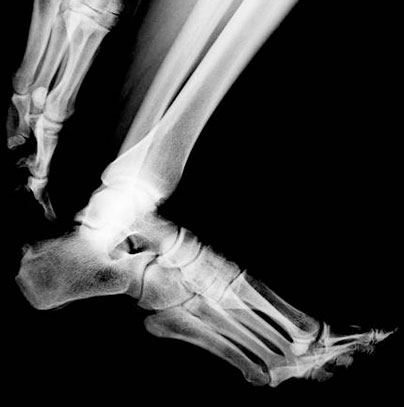What Can I Do About
Heel Pain?
Heel pain is a major foot problem experienced by Americans. It can happen to people in all walks of life. The longer a person walks or stands in his or her daily activities, the more likely he or she is to be affected by heel pain.
Standing on hard, unyielding floors or spending a lot of time on one’s feet for both work and leisure may increase a person’s likelihood of experiencing foot pain. But foot structure is actually the most significant factor in determining whether or not a person may develop this condition.
Plantar fasciitis is the medical name for heel and arch pain. The plantar fascia is a ligament-like band that runs from your heel to the ball of your foot. The band pulls on your heel bone, raising the arch of your foot as it pushes off the ground. If your foot moves incorrectly, the plantar fascia may become strained. The fascia may swell, and its tiny fibers may begin to fray. This is the cause of plantar fasciitis.
The longer a person walks or stands in his or her daily activities, the more likely he or she is to be affected by heel pain.
Causes?
Plantar fasciitis is often caused by poor foot mechanics. If your foot flattens too much, the fascia may overstretch and swell. If your foot flattens too little, the fascia may ache from being pulled too tight.
Symptoms
With plantar fasciitis, the bottom of your foot may hurt when you stand, especially first thing in the morning. Pain usually occurs on the inside of the foot, near the spot where your heel and arch meet. Pain may lessen after a few steps, but it comes back after rest or with prolonged movement.
Related Problems
A heel spur is extra bone that may grow near the spot where the plantar fascia attaches to the heel. The heel spur may form in response to the plantar fascia’s tug on the heel bone.
Bursitis is the swelling of a bursa, a fluid-filled sac that reduces friction between a ligament and a bone. Bursitis may develop if a swollen plantar fascia presses against a plantar bursa. Haglund’s Deformity is a bony outgrowth that develops on the upper back of your heel bone. Because you may feel pain where the edge of your shoes rubs the Achilles tendon, the problem is nicknamed “pump bump.” A Stress Fracture is a crack in the heel bone, usually behind or below the subtalar joint. You may feel pain during extended activities when you touch the injured area.

Sever’s Disease is an inflammation in the area between the sections of bone that make up the heel. The problem occurs in young people, whose bones have not yet fused and fully matured. The back of your heel may hurt, forcing you to limp or walk on your toes.

